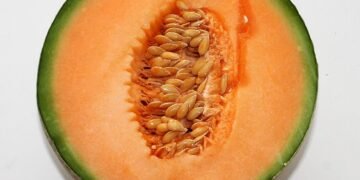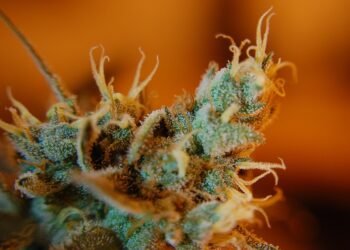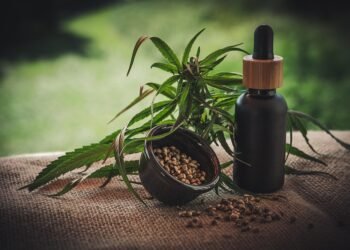Shedding Light on Cannabis: Understanding the Plant’s Unique Lighting Needs
When it comes to growing cannabis, one of the most important factors to consider is lighting. Cannabis plants have unique lighting needs that must be met in order for them to thrive and produce high-quality buds. In this article, we will explore the different types of lighting options available for cannabis growers, as well as the specific requirements that cannabis plants have when it comes to light.
Why is Lighting Important for Cannabis Plants?
Light is essential for the process of photosynthesis, which is how plants convert light energy into chemical energy. Without adequate light, cannabis plants will not be able to grow and develop properly. In addition to providing energy for growth, light also plays a crucial role in regulating the plant’s growth cycle and influencing the production of cannabinoids and terpenes, which are the compounds responsible for the plant’s aroma and effects.
Types of Lighting for Cannabis Plants
There are several different types of lighting options available for cannabis growers, each with its own pros and cons. The most common types of lighting used for growing cannabis include:
1. Fluorescent Lights
Fluorescent lights are a popular choice for beginner growers due to their affordability and ease of use. However, they are not the most efficient option for growing cannabis, as they do not provide enough light intensity for larger plants.
2. High-Intensity Discharge (HID) Lights
HID lights, such as metal halide (MH) and high-pressure sodium (HPS) lights, are a more powerful option for growing cannabis. They provide a high level of light intensity, making them ideal for larger plants and higher yields. However, they can be more expensive to purchase and operate than other types of lighting.
3. Light-Emitting Diode (LED) Lights
LED lights are a popular choice for many cannabis growers due to their energy efficiency and customizable spectrum options. They can be more expensive upfront, but they are more cost-effective in the long run due to their energy efficiency and longevity.
Understanding the Light Cycle for Cannabis Plants
In addition to selecting the right type of lighting for your cannabis plants, it is also important to understand the light cycle that they require in order to grow and produce high-quality buds. Cannabis plants require a specific light cycle consisting of both light and dark periods in order to thrive.
Vegetative Stage
During the vegetative stage, cannabis plants require 18-24 hours of light per day. This extended light period promotes vegetative growth, allowing the plants to develop strong roots and branches before entering the flowering stage.
Flowering Stage
During the flowering stage, cannabis plants require 12 hours of light followed by 12 hours of darkness per day. This light cycle signals to the plants that it is time to start producing buds, leading to the development of flowers rich in cannabinoids and terpenes.
Optimizing Light for Cannabis Growth
In order to optimize light for cannabis growth, it is important to consider the following factors:
1. Light Intensity
Cannabis plants require a high level of light intensity in order to thrive. Ensure that your plants are receiving enough light by positioning your lights at the correct distance from the canopy and using the appropriate wattage for your growing space.
2. Light Spectrum
Cannabis plants require a specific light spectrum in order to grow and develop properly. Consider using full-spectrum lights that mimic natural sunlight in order to provide your plants with the necessary wavelengths for photosynthesis.
3. Light Duration
It is important to provide your cannabis plants with the correct light cycle in order to promote healthy growth and flowering. Use a timer to ensure that your plants are receiving the right amount of light and darkness each day.
Common Questions About Cannabis Lighting
1. Can I use regular household light bulbs to grow cannabis?
No, regular household light bulbs do not provide enough light intensity for cannabis plants to grow properly. It is recommended to use specialized grow lights that are designed specifically for growing plants.
2. How far should my lights be from the canopy of my plants?
The distance between your lights and the canopy of your plants will depend on the type of lighting you are using and the wattage of your lights. In general, HID lights should be positioned 18-24 inches from the canopy, while LED lights can be placed closer, around 12-18 inches away.
3. How long should I leave my lights on each day?
During the vegetative stage, cannabis plants require 18-24 hours of light per day, while during the flowering stage, they require 12 hours of light followed by 12 hours of darkness. Use a timer to ensure that your plants are receiving the correct amount of light each day.
Conclusion
Lighting is a crucial factor in the successful growth of cannabis plants. By understanding the unique lighting needs of cannabis plants and selecting the right type of lighting for your growing space, you can ensure that your plants thrive and produce high-quality buds. Consider factors such as light intensity, spectrum, and duration in order to optimize light for cannabis growth and achieve the best possible results.
Remember to provide your plants with the correct light cycle for each stage of growth, and monitor their progress regularly to ensure that they are receiving the right amount of light and darkness. With proper lighting and care, you can enjoy a successful cannabis growing experience and harvest a bountiful crop of high-quality buds.




















![The Mind-Blowing Effects of [Cannabis Strain]](https://cannabisdailyguide.com/wp-content/uploads/2025/10/tree-4138799_960_720-360x180.jpg)

















































